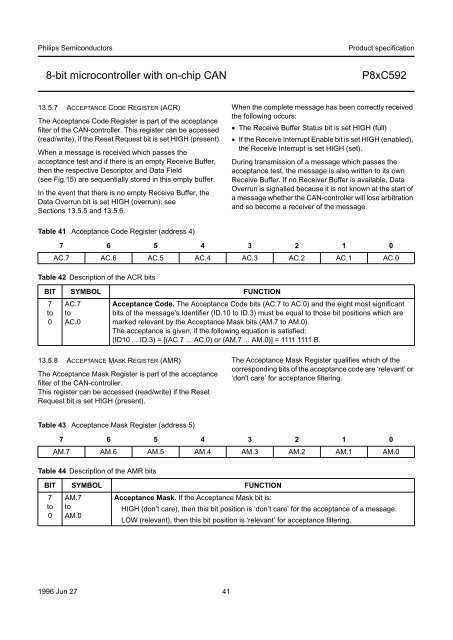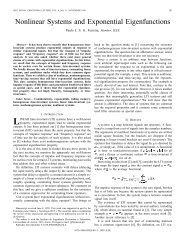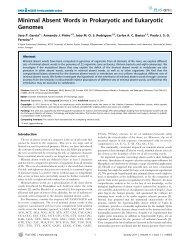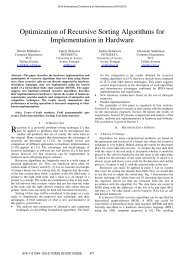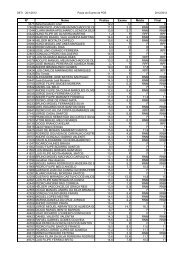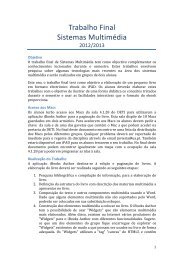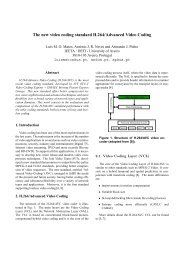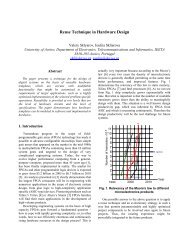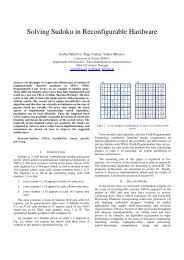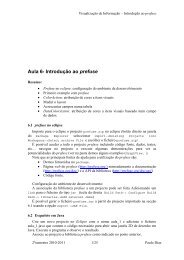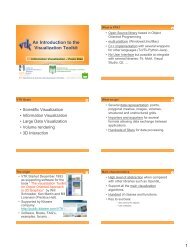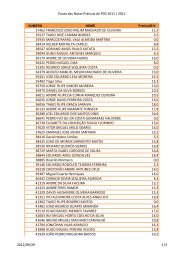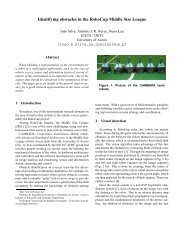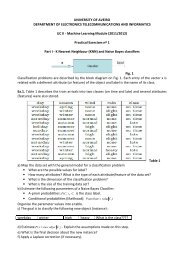DATA SHEET - IEETA
DATA SHEET - IEETA
DATA SHEET - IEETA
You also want an ePaper? Increase the reach of your titles
YUMPU automatically turns print PDFs into web optimized ePapers that Google loves.
Philips Semiconductors Product specification<br />
8-bit microcontroller with on-chip CAN P8xC592<br />
13.5.7 ACCEPTANCE CODE REGISTER (ACR)<br />
The Acceptance Code Register is part of the acceptance<br />
filter of the CAN-controller. This register can be accessed<br />
(read/write), if the Reset Request bit is set HIGH (present).<br />
When a message is received which passes the<br />
acceptance test and if there is an empty Receive Buffer,<br />
then the respective Descriptor and Data Field<br />
(see Fig.15) are sequentially stored in this empty buffer.<br />
In the event that there is no empty Receive Buffer, the<br />
Data Overrun bit is set HIGH (overrun); see<br />
Sections 13.5.5 and 13.5.6.<br />
Table 41 Acceptance Code Register (address 4)<br />
Table 42 Description of the ACR bits<br />
1996 Jun 27 41<br />
When the complete message has been correctly received<br />
the following occurs:<br />
• The Receive Buffer Status bit is set HIGH (full)<br />
• If the Receive Interrupt Enable bit is set HIGH (enabled),<br />
the Receive Interrupt is set HIGH (set).<br />
During transmission of a message which passes the<br />
acceptance test, the message is also written to its own<br />
Receive Buffer. If no Receiver Buffer is available, Data<br />
Overrun is signalled because it is not known at the start of<br />
a message whether the CAN-controller will lose arbitration<br />
and so become a receiver of the message.<br />
7 6 5 4 3 2 1 0<br />
AC.7 AC.6 AC.5 AC.4 AC.3 AC.2 AC.1 AC.0<br />
BIT SYMBOL FUNCTION<br />
7<br />
to<br />
0<br />
AC.7<br />
to<br />
AC.0<br />
13.5.8 ACCEPTANCE MASK REGISTER (AMR)<br />
Acceptance Code. The Acceptance Code bits (AC.7 to AC.0) and the eight most significant<br />
bits of the message's Identifier (ID.10 to ID.3) must be equal to those bit positions which are<br />
marked relevant by the Acceptance Mask bits (AM.7 to AM.0).<br />
The acceptance is given, if the following equation is satisfied:<br />
(ID10 ... ID.3) = [(AC.7 ... AC.0) or (AM.7 ... AM.0)] = 1111 1111 B.<br />
The Acceptance Mask Register is part of the acceptance<br />
filter of the CAN-controller.<br />
This register can be accessed (read/write) if the Reset<br />
Request bit is set HIGH (present).<br />
Table 43 Acceptance Mask Register (address 5)<br />
Table 44 Description of the AMR bits<br />
The Acceptance Mask Register qualifies which of the<br />
corresponding bits of the acceptance code are ‘relevant’ or<br />
‘don't care’ for acceptance filtering.<br />
7 6 5 4 3 2 1 0<br />
AM.7 AM.6 AM.5 AM.4 AM.3 AM.2 AM.1 AM.0<br />
BIT SYMBOL FUNCTION<br />
7<br />
to<br />
0<br />
AM.7<br />
to<br />
AM.0<br />
Acceptance Mask. If the Acceptance Mask bit is:<br />
HIGH (don’t care), then this bit position is ‘don’t care’ for the acceptance of a message.<br />
LOW (relevant), then this bit position is ‘relevant’ for acceptance filtering.


